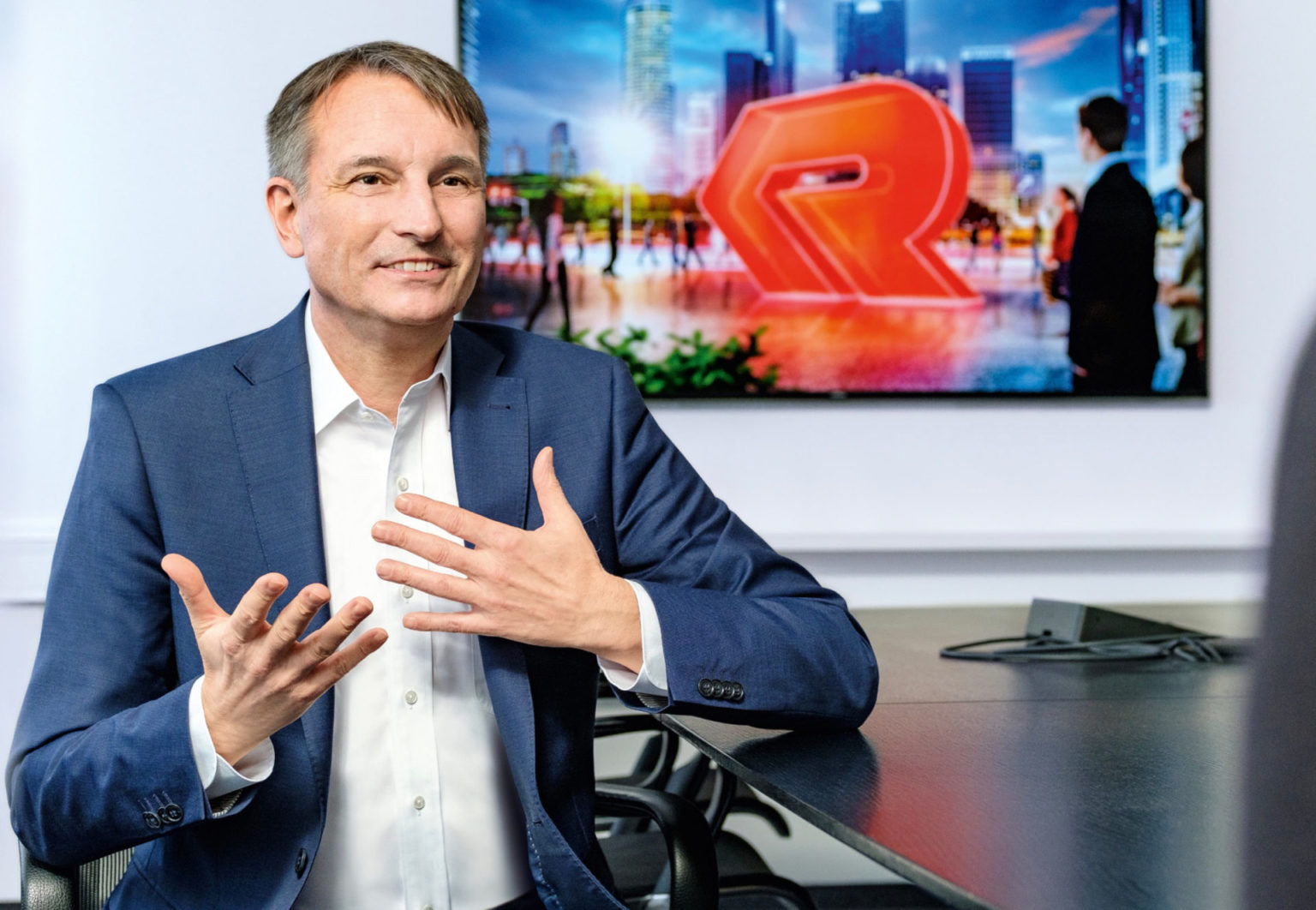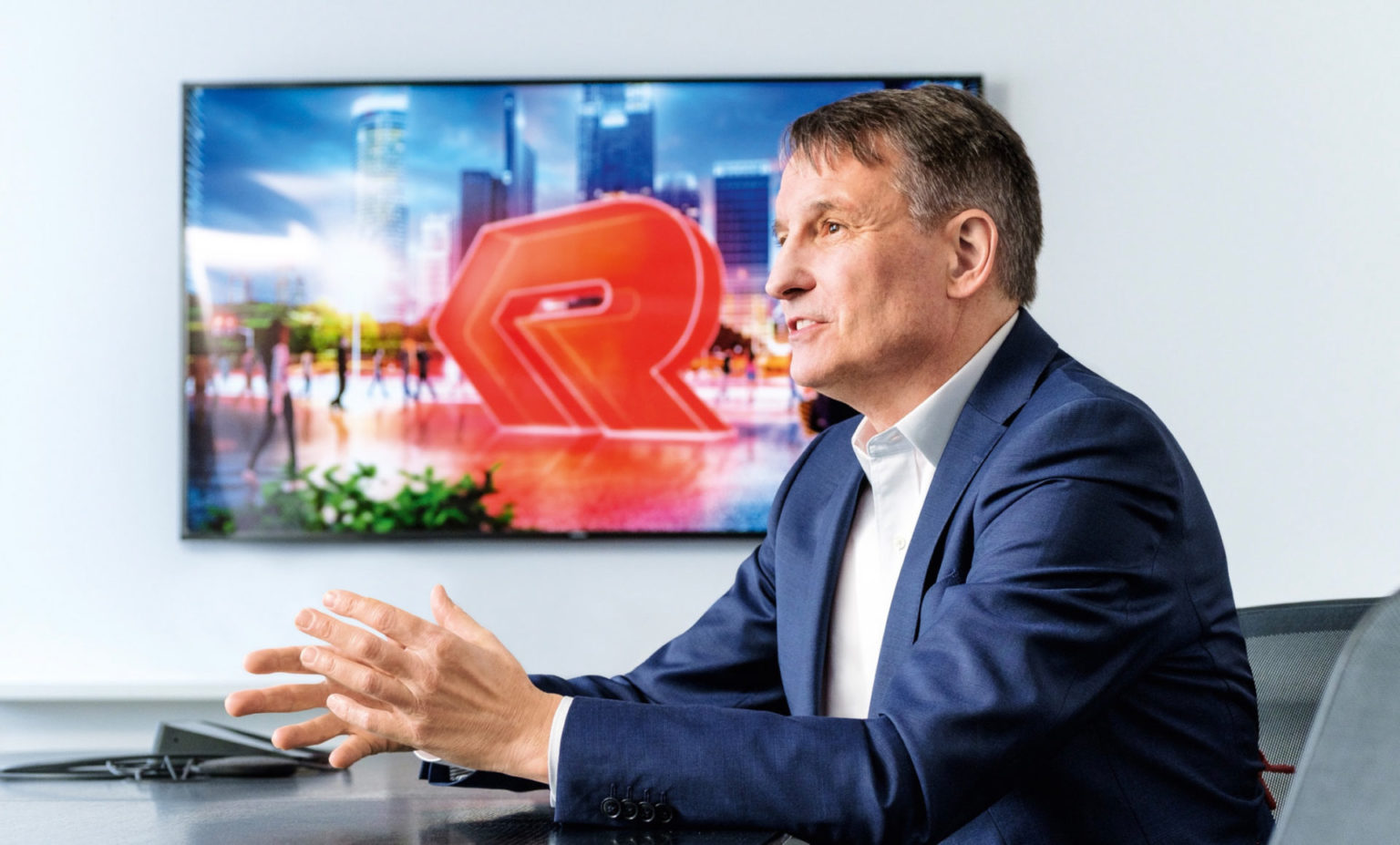WE ARE SHAPING THE CHANGE TOWARD INTELLIGENT FIREFIGHTING
CEO Dieter Siegel talks about the future of the firefighting industry and his vision for the strategic positioning of the Rosenbauer Group in 2030.
In Discussion with the CEO
Climate change, social change, and digitalization – the world, and with it the firefighting business, are undergoing lasting change. Added to this is the shift in global markets. As a technology leader, Rosenbauer will actively shape this transformation process and redefine the limits of technology with innovative products and solutions. Dieter Siegel is convinced that the challenges of the future are also opportunities that Rosenbauer wants to seize while living up to its responsibility toward the environment, society, employees, and industry.
Mr. Siegel, the future may be impossible to predict, but anybody who wants to shape it needs to know the direction of travel. In which direction is the firefighting industry heading?
D. Siegel_ The firefighting industry is set to grow because the safety needs of people all over the world are growing, too, especially in urban areas. This has been a discernible trend for years. The emphasis in the market segments will shift away from firefighting toward preventive fire protection, not least due to its significance for climate protection.
Fire departments and emergency services will kit themselves out with myriad new technologies. After all, without connectivity, digitalized products or intelligent equipment and vehicles, they will be incapable of fulfilling their mission within the coordinated safety infrastructure that characterizes the “: smart city.” And they will work together with their equipment providers even more closely than before because the challenges that they must overcome are becoming increasingly complex – as the rise of electric vehicles demonstrates. In the future, they will no longer have to do everything themselves either – such as servicing electric firefighting vehicles – and will want a partner who can provide them with all the right products and solutions, tailored to their needs, and on whom they can depend completely, including when it comes to after-sales service.
We accept this responsibility because we regard it as essential to the success of the Rosenbauer Group, just as we believe that economic success is essential to our ability to take on this responsibility.
You mentioned the complexity of the new challenges. How does Rosenbauer help fire departments deal with this?
D. Siegel_ By diversifying, by thinking beyond our range of products and services, by building up across-the-board expertise in key areas and by offering a product range that is as comprehensive as possible. So in addition to our role as an innovation and technology leader, we are striving for leadership in some very specific areas that we have defined such as the digital transformation of fire services, the electrification of vehicles and emergency technology and the problem of forest fires in all its many facets.

We are changing the world of firefighting by combining classic firefighting technology with new digital solutions.”
CEO Dieter Siegel
What conclusions do you draw for the Rosenbauer Group from the challenges facing the industry?
D. Siegel_ Looking at these developments, we see one thing above all else: opportunities! Opportunities to develop new areas of business by offering new, digital products and solutions and also to assert ourselves as a technological leader in the transformation of fire services. We see opportunities to sell more sophisticated products because conventional firefighting technology will be complemented by a range of digital features and functions allowing it to be used in the connected future of day-to-day firefighting operations. We also see an opportunity to expand our position as an integrated fire protection company toward prevention and so benefit from the strengths and synergies associated with being the biggest company in the industry. We are also combining opportunities for growth with the electrification of firefighting vehicles, improved customer service and an enhanced online offering for our component and equipment portfolio.
Let’s talk specifics. Where will the conventional vehicle business be in 2030, and what role will electric vehicles play in the future product range?
D. Siegel_ In nine years’ time, conventional products will still constitute the bulk of our business and the vehicles will contribute the most revenues. However, electrification – especially of large vehicle fleets – will have gained significant momentum by then. We estimate that almost half of all vehicles that we deliver to emergency services in 2030 will be electrified. By 2023, we want to offer every vehicle and vehicle type that Rosenbauer sells worldwide with an electrified powertrain, too.
According to internal estimates, almost half of all vehicles will be delivered with electrified powertrains in 2030.

What form will this digital product upgrade take?
D. Siegel_ We are making drones that can be used in firefighting operations, for example. We are currently enhancing their connectivity and ensuring that the data that they collect can be made available on security platforms in bundled form and in a targeted manner. We are also working on an expanded range of functions and developing what we call “heavy-duty drones” – in other words, drones capable of carrying and transport heavier loads. Regarding our firefighting robots, too, we are addressing the issue of connectivity and working on expanding their range of functions.
We are currently also conducting research into assistance systems and technologies for autonomous driving and flight. In the future, this technology will be found in robotic systems and firefighting vehicles. Although we of course have no plans to develop firefighting vehicles capable of driving autonomously, they will one day need to be capable of communicating with autonomous vehicles in order to clear the way when heading to an emergency.
Personal protective equipment for emergency personnel will also benefit from a digital upgrade. Smart firefighter clothing, for example, will monitor the vital signs and automatically inform incident command if, say, a member of the crew deployed with breathing apparatus risks becoming overwhelmed by heat.
How does Rosenbauer manage the balancing act of pushing back technological limits without exceeding economic limits?
D. Siegel_ By developing only products that can be standardized and scaled and that can be manufactured with ease – so on an industrial scale to the greatest extent possible – and whose functionality is geared precisely toward achieving the desired customer benefit. The greater the extent to which digitalization and connectivity find their way into routine firefighting operations, the more important standardized solutions that are compatible with or can be integrated in other systems will become.
That said, we have always ensured that our research into the technology of the future never gets in the way of our day-to-day business. Our innovation department develops these products to a stage where the actual cost of developing them later on when the time comes remains within reasonable limits. A good example of this is our RT/RTX (note: for the US market). We developed the basic concept in advance as part of a study and then brought it to series maturity. The fact that we successfully brought the Berlin and Los Angeles fire departments on board as development partners here not only demonstrates how important electrification is for two of the leading fire departments in Europe and America but is also testament to their confidence in Rosenbauer as an innovative and visionary partner on the road toward an electric future. In addition, we are constantly working to make our processes more efficient and take only business risks that we are confident of managing.
Sustainability is playing an ever greater role in the world of firefighting. How is Rosenbauer approaching this issue?
D. Siegel_ Our electric firefighting vehicle is a great example here, too. During development, we focused not only on creating a forward-looking drive concept but also on the people who would use this vehicle for deployments. The RT – or RTX – is not only safer because it handles almost like a car but also protects the health of its occupants because it is designed entirely with ergonomics in mind and ensures that they are exposed to less noise and pollution over the long distances involved in deployments. We develop all our products with sustainability in mind and launch only tried-and-tested technology that is fail-safe and capable of withstanding all the stresses and strains.
Finally, let’s address the internal focus of the 2030 strategy. Where is that journey leading?
D. Siegel_ We developed a concept called the “Rosenbauer City”: a city as a metaphor for the company, where employees feel that they have their finger on the pulse of the time; where they work together with mutual respect and on an equal footing; where they participate actively and without barriers; and where they can achieve their personal goals. So over the coming years, we want to focus even more on the people at Rosenbauer, on breaking down our internal boundaries in the process and building for them an open city without walls.

“Rosenbauer City” is a metaphor for Rosenbauer’s long-term strategy. It aims to put people even more at the center of the company.